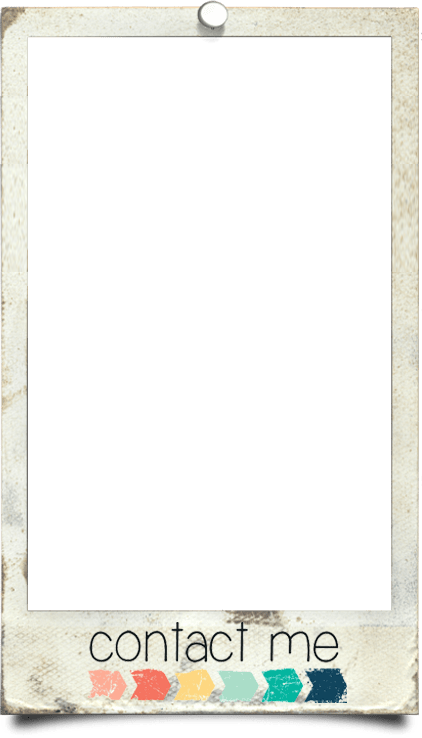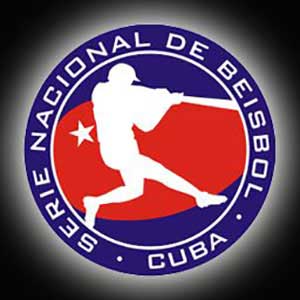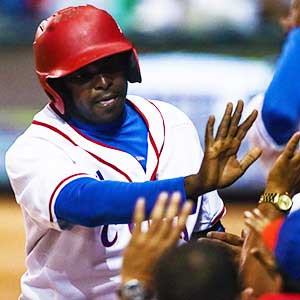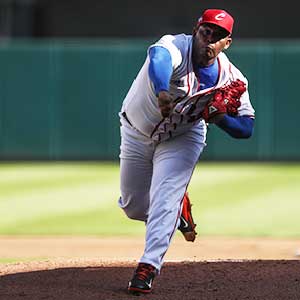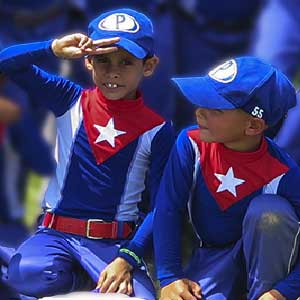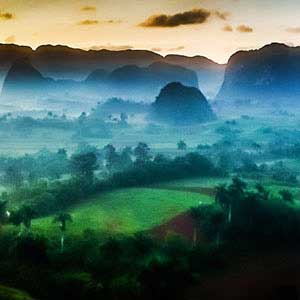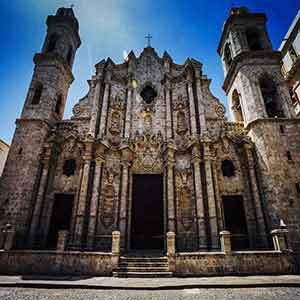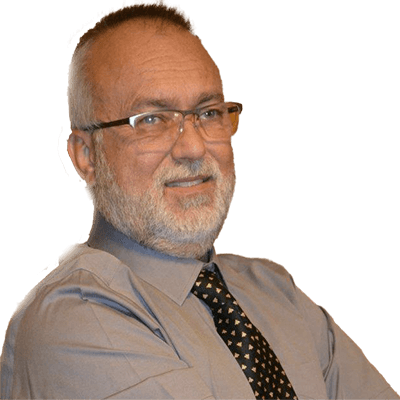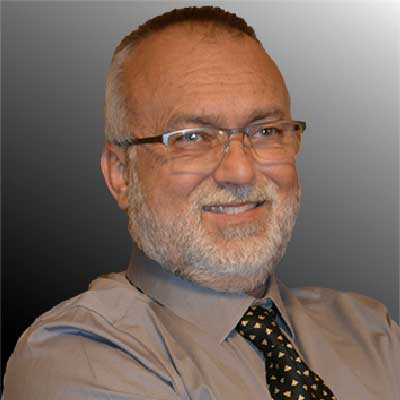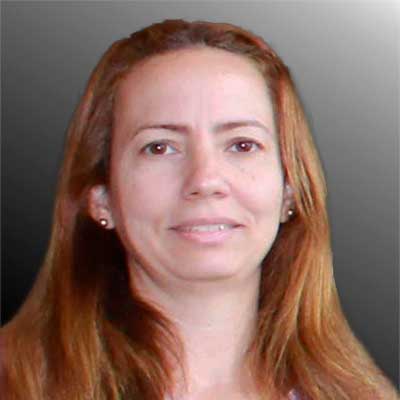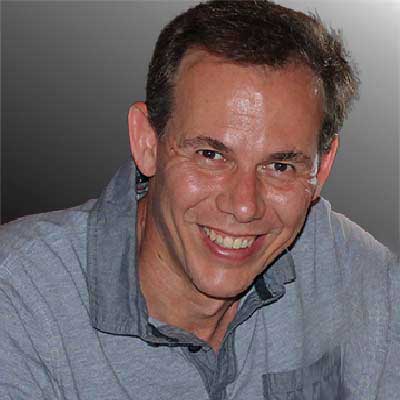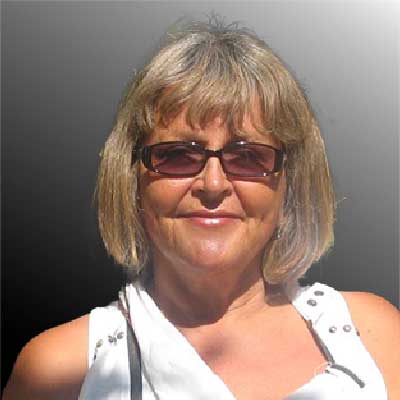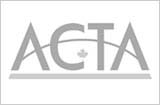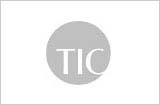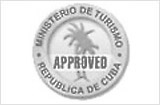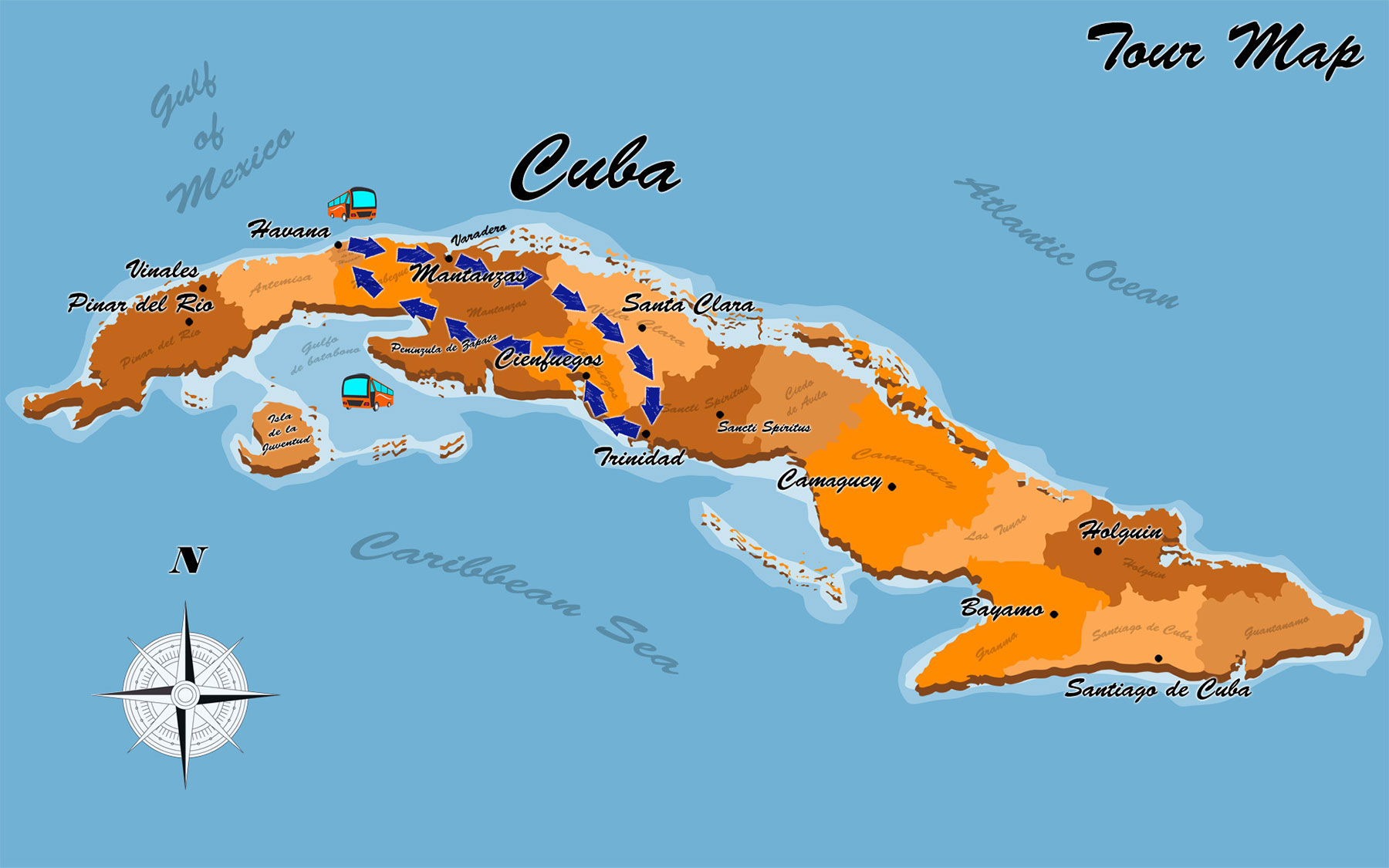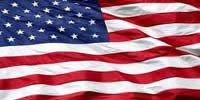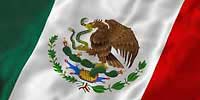Cuba Sports Tours & Travel
What sets our Cuba Sports Tours apart are the Private Meetings with Cuban Baseball Players, Cuban Baseball Officials, Cuban Baseball Journalists, and Cuban Baseball Instructors, Coaches and Staff! Then you have the best seats at Baseball Games at different Stadiums through the Caribbean Island!
From September 5 to September 12, 2026
Unprecedented Access to Cuban Baseball for as little as $2,999 (taxes included)!
Referral Discount: $100
And remember every person you invite will also receive a $100 discount!
Baseball has been a central symbol of Cuban pride since the late 19th Century.
In late 1878 the Cuban League was organized, consisting of three teams: Almendares, Habana, and Mantanzas and playing four games per team. The first game was played on December 29, 1878, with Habana defeating Almendares 21 to 20. Habana, under team captain Bellán, was undefeated in winning the first championship. The teams were amateurs (and all whites), but gradually professionalism took hold as teams bid away players from rivals.
In 1899, the All Cubans, consisting of Cuban League professional players, were the first Latin American team to tour the United States. The team returned in 1902–05, exposing white Cuban players to U.S. major league and minor league scouts, and introducing black Cuban players to competition against the Negro leagues. Later Negro league teams included the Cuban Stars and the New York Cubans, which were stocked mostly with Cuban or other Latin American players.
Amateur baseball in Cuba was thriving in the 1940s and deepened the organization and maturity of the league. There were several amateur leagues in Cuba. Many of the leagues were composed of factory or businesses workers who represented their individual companies. Main sources of talent for Cuban baseball teams were from sugarmill baseball, semi-professional teams, and the amateur leagues.
Original amateur teams represented exclusive social clubs in the Havana area, such as the Velado Tennis club. The term “amateur baseball” is defined as “specifically the game played by social clubs who played in the Amateur league”.Cubans refer to this league as los amateurs. The growth of amateur baseball can be attributed to the economic recovery in Cuba around 1934. In 1934 there were only six teams but by 1940 that grew to eighteen.
After the triumph of the Revolution in 1959, the revolutionary government chose it as a symbol of excellence and a voice for the rallying cry of nationalism. Shortly after the revolution, victorious guerilla leaders demonstrated their Cuban spirit by engaging in exhibition baseball games, with such symbolic gestures reinforcing the notion that baseball would be an integral component of Revolutionary Cuba.
In 1961, the Cuban government replaced the former professional baseball system with new amateur baseball leagues such as the Cuban National Series.
Post-revolutionary baseball in Cuba would be based on a socialist model of sports not driven by money, but by national ideals. This fundamental shift from a professional to amateur system was preceded by the introduction of a very important institute: the Institute for Sports, Physical Education and Recreation (INDER).
Sports participation in Cuba was also universalized and thus made an essential component of revolutionary activity. The term coined to describe such a process was Masividad, and sports served the purpose to not only educate and train the Cuban people, but also to allow them yet another opportunity to fit in an egalitarian society that conformed to the very principles of the revolution.
Everything has seemingly been positive, however not everything went as planned. Since the professional system was abolished in-favor of amateur leagues, players were not paid as extravagantly as they once were. This led many players to defect to the United States due to deteriorating economic conditions.
Yes, Cuba lost a lot of baseball talent during this time, but the resilient spirit of the Cuban citizens on the island will inevitably help close the gap. The Cuban government to this very day is also somewhat hostile in relation to the players that did defect in the 1990s. Some officials in the Cuban government believe the defectors currently playing in the USA are baseball slaves no matter how highly they are rewarded with monetary incentives.
Please, check the day-by-day below
Cuba Engage Tours
Notice to US Sports Organizations, US Sports Clubs, US Sports Federations, US Sports Associations, US Sports Foundations, and other Sports Institutions from USA:
US Sports Organizations, US Sports Clubs, US Sports Federations, US Sports Associations, US Sports Foundations, and other Sports Institutions from USA can organize a trip to Cuba under the provisions of the General License for Educational Activities, the General License for Support for the Cuban People, the General License for Group People-to-people Educational Travel and other Academic Educational Activities, the General License for Professional Research, the General License for Semi-Professional & Amateur International Sports Competition, the General License for Humanitarian Projects, the General License for Activities of Private Foundations or Research or Educational Institutes among others. Certain conditions are to be met to comply with OFAC General License requirements for each category of USA Cuba travel though.
The mission of your organization and the objective of your trip to Cuba determine under what general license you can travel to Cuba legally. In general, most trips should consist of a full-time schedule of activities intended to promote the exchange with the ordinary citizens of Cuba. This full-time schedule must also include educational activities that result in meaningful interaction in between U.S and Cuban nationals. Free time in excess or regular tourists' activities are not permitted.
We take care of all details both in North America and in Cuba, including VISA and flight arrangements to Cuba's main destinations via USA ports (Miami, Tampa, Fort Lauderdale, Houston, New York, Los Angeles, and others) or through third countries like Canada and Mexico. Authorized US organizations can travel through a third country subject to the same restrictions and requirements as those flying directly from USA.
At Authentic Cuba Travel®, we have been organizing such educational and cultural travel experiences from the United States of America for years with great success.
Notice to US Sports Academies, Universities, Colleges and Schools with Sports Programs and Departments from USA:
In January 2016, the US Government announced further enhancements to the 12 categories of authorized travel to Cuba that previously required a specific license (this is, lengthy applications to OFAC). Now travel to the Caribbean island is allowed under a general license (this is, self-completed paperwork with no application to OFAC needed).
After President Trump's policy change on USA Cuba travel on February 6, 2025, and July 14, 2025, the General License for Educational Activities remains in place. Accredited U.S. graduate or under graduate degree-granting institutions; U.S. Academic Institutions; and U.S. Schools can organize and sponsor an educational trip to Cuba for their students, faculty and staff under the General License for Educational Activities, provided that the trip meets OFAC guidelines; and that an employee or other representative of the organization escorts the trip to make sure such guidelines are followed by all participants.
US Sports Academies, Universities, Colleges and Schools with Sports Programs and Departments from USA can organize and sponsor a trip to Cuba for educational activities. The purpose of the Cuba travel should be for:
_ the participation in a structured educational program offered for credit as part of a course of the sponsoring institution;
_ educational exchanges sponsored by Cuban or U.S. secondary schools involving secondary school students’ participation in a formal course of study or in a structured educational program offered by a secondary school or other academic institution, and led by a teacher or other secondary school official are authorized. This authorization allows for participation of a reasonable number of adult chaperones to accompany the secondary school students to Cuba.
_ attendance at non-commercial academic seminars, conferences and workshops related to Cuba sponsored or co-sponsored by U.S. academic institution.
_ non- commercial academic research related to Cuba for the purpose of obtaining a graduate or undergraduate degree;
_ the participation in a formal course of study at a Cuban academic institution provided that credits will be accepted toward the student’s graduate or undergraduate degree.
We take care of all details both in North America and in Cuba, including VISA and flight arrangements to Cuba's main destinations via USA ports (Miami, Tampa, Fort Lauderdale, Houston, New York, Los Angeles, and others) or through third countries like Canada and Mexico. Authorized US organizations can travel through a third country subject to the same restrictions and requirements as those flying directly from USA.
At Authentic Cuba Travel®, we have been organizing such educational and cultural travel experiences from the United States of America for years with great success.
Want to Take Your Students to Cuba?
Authentic Cuba Travel® operates courses, programs and exchanges sponsored by Cuba’s top educational schools and organizations such as the University of Havana, Cuba's National Ballet School, Cuba's Sports Ministry, San Alejandro’s Arts School, Insituto Cubano de La Musica, Conjunto Folklórico Nacional de Cuba. Request custom-made no-obligation Cuba Study Tours® for your students and check all the resources we put at your service. Do not wait any longer. Now is the time to start planning the next Cuba tour for your students.
Cuba Study Trips
-
Cuba Business Tours & Travel
Explore Cuba's Economy and Private Business Sector
-
Cuba Healthcare Tours & Travel
Professional Research Cuba's Medical System & Healthcare Model
-
Cuba Cultural Tours & Travel
Discover the Wonders of Cuba’s UNESCO World Heritage Sites
-
Cuba Nature Tours & Travel
Visit UNESCO Biosphere Reserves, National Parks & Protected Areas
-
Cuba Architecture Tours & Travel
Explore America’s largest & best preserved Spanish Historical Cities
-
Cuba Catholic Tours & Travel
Exchange with Cubans at Cathedrals, Churches & Social Projects
Cuba School Programs
-
Spanish Immersion Course
Spanish Course sponsored by the University of Havana
-
Ballet Training Course
Ballet Course sponsored by Cuba's National Ballet School
-
Sports Training Exchange
Sports Trainning sponsored by Cuba's Sports Ministry
-
Arts Educational Program
Arts Program sponsored by San Alejandro’s Arts School
-
Jazz Performance
Sponsored by the Havana Jazz Festival’s Organizing Committee
-
Dance Workshops
Sponsored by Conjunto Folklórico Nacional de Cuba
Cuba Education Tours
Cuba Real Tours
Cuba Baseball History
Baseball was introduced to Cuba in the 1860s by Cubans who studied in the United States and American sailors who ported in the country. The sport quickly spread across the island nation. Nemisio Guillo is credited with bringing a bat and baseball to Cuba in 1864 after being schooled in Mobile, Alabama. Two more Cubans were sent to Mobile, one being his brother Ernesto; the Guillo brothers and their contemporaries formed a Baseball team in 1868, the Habana Baseball Club. The club won one major match against the crew of an American schooner anchored at the Matanzas harbour. The first official match in Cuba took place in Pueblo Nuevo, Matanzas, at the Palmar del Junco, December 27, 1874. It was between Club Matanzas and Club Habana, the latter winning 51 to 9, in nine innings.
What's Included?
- Tour of UNESCO World Heritage Site, Havana Historical Centre.
- Private meeting with the Baseball Federation of Cuba.
- Visit to the Children's Academy of Baseball at the Sports City.
- Visit stadium where Cuban Baseball Hall of Fame was created.
- Premium seats at several baseball games through Cuba.
- Cocktail party at Club Habana with sports journalists.
- Guided tour of UNESCO World Heritage site, Cienfuegos.
- Travel to UNESCO sites, historical Trinidad and Sugar Mill Valley.
- Guided tour of Santa Clara City.
- Visit to Che Guevara Square of Revolution and Mausoleum.
- Lecture on Cuba's National Series by Baseball Journalists.
- Explore Cuba's famous Old Havana's Handicraft Market.
- Explore breath-taking landscapes at Vinales Valley National Park.
- Guided tour of Partagas Cigar Factory, founded in 1845.
Expert’s Corner
Hello! I’m Bernt Dietmar. Over 20 years ago, I visited Cuba as part of a delegation of American scientists interested in exploring opportunities for research and business collaboration. I was surprised by Cuba’s high academic standards, and the methods used in the educational system. We founded Authentic Cuba Travel® to show that Cuba is more than another Caribbean tourism destination and promote the understanding in between Cuba and North America. I kindly invite you to join us. We'll explore UNESCO World Heritage Sites, exchange with Cubans, partake in local food dishes, music, rum, and much more!
Cuban Festivals
Every year Cuba’s International Festivals brought travellers to Cuba from all over the world. Every year Authentic Cuba Travel® makes sure that those attending international events such as the Havana Jazz Festival, the Havana Book Fair, the Havana Film Festival, the Havana Art Biennial, the Fire Festival, the Havana Ballet Festival or the Habano Cigar Festival get the most out of their Cuba travel experience and get to know the authentic Cuba.
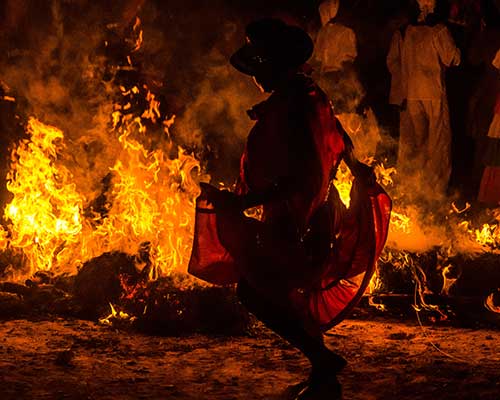
Cuba Fire Festival
Organized by Casa del Caribe, the annual Cuba Fire Festival will take place in Santiago de Cuba from July 2, 2026 to July 9, 2026. With musical venues at 50 locations and city streets lined with bars and stalls, rum-fuelled revellers get in the festival spirit as live bands, musicians and DJs keep crowds at fever pitch well into the nighttime hours.
Book NowCuba Fire Festival
Organized by Casa del Caribe, the annual Cuba Fire Festival will take place in Santiago de Cuba from July 2, 2026 to July 9, 2026. With musical venues at 50 locations and city streets lined with bars and stalls, rum-fuelled revellers get in the festival spirit as live bands, musicians and DJs keep crowds at fever pitch well into the nighttime hours.
Book Now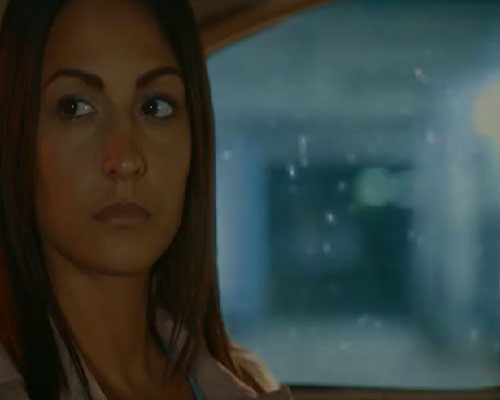
Havana Film Festival
The Havana Film Festival promotes the cinematographic works of Spanish- language filmmakers from Latin America, Spain and Cuba. It is sponsored by the Cuban Institute of the Cinematographic Art and Industry, ICAIC. The 46th edition of the Festival International del Nuevo Cine Latinoamericano will take place from December 4, 2025 to December 14, 2025.
Book NowHavana Film Festival
The Havana Film Festival promotes the cinematographic works of Spanish- language filmmakers from Latin America, Spain and Cuba. It is sponsored by the Cuban Institute of the Cinematographic Art and Industry, ICAIC. The 46th edition of the Festival International del Nuevo Cine Latinoamericano will take place from December 4, 2025 to December 14, 2025.
Book Now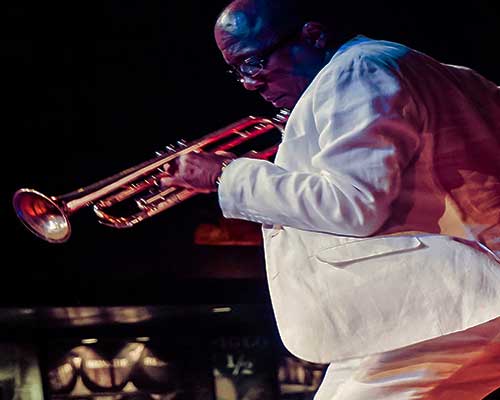
Havana Jazz Festival
The 41st International Jazz Festival of Havana, which is sponsored by famed Cuban jazz artist Chucho Valdes and ICM, or the Cuban Institute of Music, will be held in numerous locations throughout La Habana from January 25, 2026 to February 1, 2026. More than 100 international bands have joined Cuba’s top Jazz musicians in previous festivals.
Book NowHavana Jazz Festival
The 41st International Jazz Festival of Havana, which is sponsored by famed Cuban jazz artist Chucho Valdes and ICM, or the Cuban Institute of Music, will be held in numerous locations throughout La Habana from January 25, 2026 to February 1, 2026. More than 100 international bands have joined Cuba’s top Jazz musicians in previous festivals.
Book Now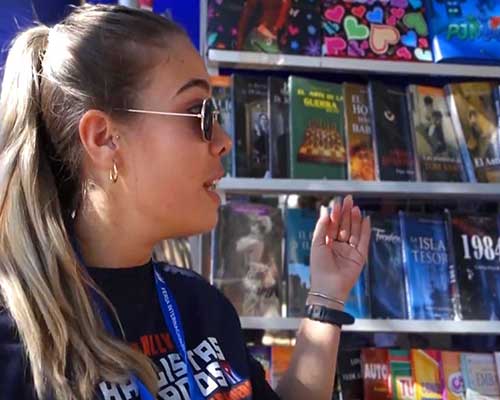
Havana Book Fair
The 34th International Book Fair of Havana will take place in Havana City from February 12 to February 22, 2026. Along with the public, the book fair is attended by Cuban and international authors, publishers, and political officials. Organized by the Cuban Book Institute, the fair transforms the Spanish fortification La Cabana into one of the biggest book parties in the world.
Book NowHavana Book Fair
The 34th International Book Fair of Havana will take place in Havana City from February 12 to February 22, 2026. Along with the public, the book fair is attended by Cuban and international authors, publishers, and political officials. Organized by the Cuban Book Institute, the fair transforms the Spanish fortification La Cabana into one of the biggest book parties in the world.
Book Now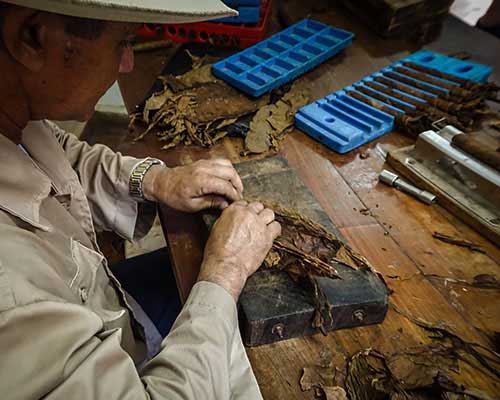
Habano Cigar Festival
Considered by many to be the world’s biggest premium cigar celebration, the XXVI Cigar Festival of Cuba will take place from February 23 to February 27, 2026. The Habano Cigar Festival's Exhibit Fair at Palacio de Las Convenciones regularly attracts some 1500 producers, distributors and businessmen, as well as large numbers of Cigar aficionados and tourists.
Book NowHabano Cigar Festival
Considered by many to be the world’s biggest premium cigar celebration, the XXVI Cigar Festival of Cuba will take place from February 23 to February 27, 2026. The Habano Cigar Festival's Exhibit Fair at Palacio de Las Convenciones regularly attracts some 1500 producers, distributors and businessmen, as well as large numbers of Cigar aficionados and tourists.
Book Now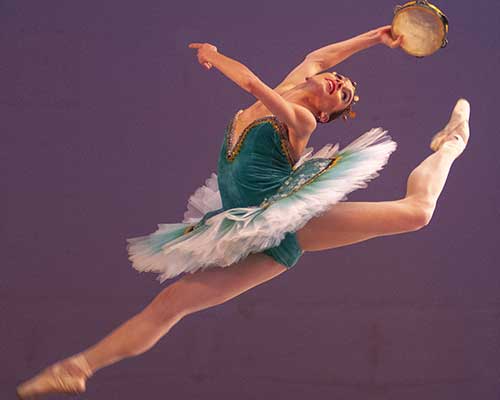
Havana Ballet Festival
The 29th Anniversary of the International Ballet Festival of Havana Alicia Alonso will take place from October 28 to November 6, 2026. Dancers, ballet companies, and choreographers from across the world look forward to the event, which is hosted by Cuba’s National Ballet at the Great Theatre of Havana, the Karl Marx Theatre and the Mella Theatre.
Book NowHavana Ballet Festival
The 29th Anniversary of the International Ballet Festival of Havana Alicia Alonso will take place from October 28 to November 6, 2026. Dancers, ballet companies, and choreographers from across the world look forward to the event, which is hosted by Cuba’s National Ballet at the Great Theatre of Havana, the Karl Marx Theatre and the Mella Theatre.
Book Now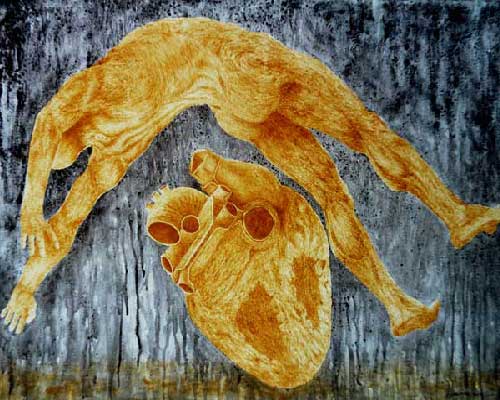
Havana Art Biennial
The 16th Havana Art Biennial will take place from November 15, 2027 to February 28, 2028. The rooster of international and national visual artists will include more than 200 creators from about 20 countries. According to the Wifredo Lam Art Center (organizing institution), the festival will turn the city into an interactive cultural corridor between the creators and public.
Book NowHavana Art Biennial
The 16th Havana Art Biennial will take place from November 15, 2027 to February 28, 2028. The rooster of international and national visual artists will include more than 200 creators from about 20 countries. According to the Wifredo Lam Art Center (organizing institution), the festival will turn the city into an interactive cultural corridor between the creators and public.
Book Now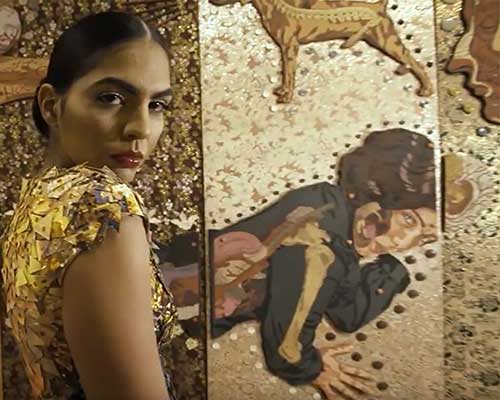
Art & Fashion Festival
The 22nd Edition of the Arte y Moda Festival will take place in the Cuban capital from November 6 to 8, 2026. The event showcases the creativity and innovation of Cuban designers, particularly their emphasis on sustainability through the use of natural and recycled materials. They utilize innovative textiles, focusing on experimental and forward looking fashion.
Book NowArt & Fashion Festival
The 22nd Edition of the Arte y Moda Festival will take place in the Cuban capital from November 6 to 8, 2026. The event showcases the creativity and innovation of Cuban designers, particularly their emphasis on sustainability through the use of natural and recycled materials. They utilize innovative textiles, focusing on experimental and forward looking fashion.
Book Now







CUBA TOUR FINDER
Select your authentic Cuba trip from over 70 Cuba tours in seconds. Sort by departure date, price, destination and even Cuba travel theme.
QUICK CUBA TOUR FINDERCuba Tour Itinerary
-
Day 1. Saturday 5 September 2026. Hello Cuba Arrival at "Jose Marti" International Airport in Havana City.
Group welcomed by the Authentic Cuba Travel® Cuban Guide. Transfer to Hotel Habana Libre, located at Vedado neighbourhood the cultural center of Havana City. Private group check-in.
Breakfast is complimentary from 7:00 a.m. to 10:00 a.m.
Evening: cocktail party and meeting with Cuban baseball journalists for an introduction on the history of the National Baseball Championship (Serie Nacional de Beisbol).
The National Baseball Championship generally runs for 5 to 6 months with a schedule of 90 games per team in the regular season. The series is then followed by 3 playoff rounds culminating in a championship. This series has been played each winter since 1961-62. There are 16 teams organized in a West League and an East League. The players are amateurs and play for the provinces in which they reside. All of the provinces in Cuba are represented by teams. The top four teams from each league advance to a playoff, with the winner crowned at the end. Two teams have dominated the National Series in recent years: Industriales and Santiago de Cuba. -
Day 2. Sunday 6 September 2026. Havana Morning: meet with representative of the Baseball Federation of Cuba (Federacion Cubana de Beisbol), the governing body of the sport of baseball in Cuba. Introduction to the Cuban National Baseball System, which is not a single baseball league; rather it is a structure of leagues and series that culminate in the National Baseball Championship (Serie Nacional de Beisbol) and the selection of the Cuba National Baseball Team.
Followed by visit to Partagas Cigar Factory, founded in 1845 by Spaniard Don Jaime Partagas. Don Jaime owned many of the best plantations in the Vuelta Abajo tobacco-growing region of Cuba and being able to choose from among the finest tobaccos on the island made the brand Paratagas incredibly successful.
Lunch in La Mina restaurant where you can enjoy traditional Cuban dishes and music live!
Afternoon: guided walking tour of Old Havana, UNESCO World Heritage Site.
Visit to Square of Arms, ancient military parade ground for Spanish soldiers and surrounded by impressive buildings such as:
Palacio de los Capitanes Generales was the former seat of colonial government. Today the building houses the Museum of the City.
Palacio del Segundo Cabo. The seat of the second authority of the island. Today it houses important publishing houses.
Castillo de la Real Fuerza, the second oldest fortress built by the Spaniards in the West Indies.
Continue walking tour onto San Francisco Square, one of the oldest in the historical quarter.
Visit to Plaza Vieja, the only civic square of colonial times. Notice it doesn't have a church or government building around. Here we will visit important institution for visual arts.
Visit to the Cathedral Square, the most beautiful and private 18th century colonial plaza of Cuba, named after the masterpiece of Cuban baroque architecture: the Cathedral of Havana built by the Jesuit order.
Free time in the famous handicraft market of Old Havana where you can purchase all sorts of crafts and souvenirs by local artisans.
Return to hotel.
Evening: attend baseball game at Latinoamericano Stadium, popularly known in Cuba as "The Colossus of Cerro” is home of Ciudad Habana Industriales. The stadium holds 55,000 people. In 1999, it hosted an exhibition series between Cuban National Team and the Baltimore Orioles. -
Day 3. Monday 7 September 2026. Explore Cuba's Mogotes at Vinales Valley Day tour to Pinar del Rio.
Exploration of Vinales Valley, containing the most spectacular scenery in Cuba and some of the most interesting and varied geological formations on the island. The valley is particularly famous for its great freestanding rock formations called mogotes.
Visit local farms and meet with farmers that have grown the best tobacco in the world for centuries.
Visit to Cueva del Indio (the Indian Cave), an extensive cave system, of which 1km of the cave is open to travellers. After following a path from the entrance you walk through some small and narrow galleries before boarding a small boat for a trip along the underground river for a fantastic view deep inside the cave.
Lunch at Mural de La Prehistoria restaurant.
Free time in Viñales downtown to explore at leisure the open-air craft market, the Parque Marti, the Church, and other interesting sites of this charming colonial town.
Continue on bus ride to Pinar del Rio city.
Dinner at Pinar del Rio Hotel.
Evening: attend baseball game at Capitan San Luis Stadium, home of Pinar del Rio baseball team. The stadium holds 8,000 people. National Series Schedule governs itinerary.
Return to Havana City. -
Day 4. Tuesday 8 September 2026. Havana- Santa Clara Morning: departure to Santa Clara, capital city of the Cuban province of Villa Clara. It is located in the most central region of the province and almost in the most central region of the country.
Santa Clara was the site of the last battle of the Cuban Revolution in late 1958, led by Ernesto Che Guevara. Guevara's column first captured the garrison at Fomento. Then, using a bulldozer, Guevara's soldiers destroyed railroad tracks and derailed a train full of troops and supplies sent by Batista. After taking the city of Santa Clara, Batista fled Cuba less than 12 hours later.
Visit to Ernesto Che Guevara Square of Revolution and Mausoleum, where the remains of Che and 16 of his men killed in action in 1967 in Bolivia rest in peace. This is a memorial complex featuring a large square, used for parades and large rallies, a monument now emblematic of Santa Clara, and a mausoleum crypt with an exhibit displaying artefacts, photos and memorabilia of Che, an extensive view of his life and work.
Visit to the Armoured Train Battle Monument, the site where guerrilla forces commanded by Che Guevara defeated reinforcements sent in an armoured train (tren blindado) by Batista's army in 1958. The monument site includes original armoured boxcars with displays of photos, armaments and artefacts inside, and a bulldozer used by the rebels to derail the train.
Late lunch at Los Caneyes hotel and private check in.
Afternoon: free to relax by swimming pool of the hotel in preparation for tonight’s baseball expedition.
Evening: attend baseball game at Augusto César Sandino Stadium, home of Villa Clara Naranjas. The stadium holds 20,000 people. National Series Schedule governs itinerary. -
Day 5. Wednesday 9 September 2026. Santa Clara- Cienfuegos Late morning: transfer to the city of Cienfuegos, founded by French immigrants at the beginning of the 19th century and renowned for its wealth of stunning historical buildings.
Visit to Palacio de Valle upon arrival. This architectural jewel originated as a home for trader, Celestino Caceres, who later gave it as a wedding present to the Valle family who added to it (in a Mughal Style with carved floral motifs) a stunning Carrara marble staircase, cupped arches, bulbous domes and delicate arabesques.
Upon arrival, your guide will recount the story of the origins of this beautiful cosmopolitan city, known as the "Pearl of the South”. You'll walk its main Plaza Martí where the ceremony of its foundation took place, as do many important events still today.
We'll visit such neoclassical buildings the Cathedral built with donations from wealthy slave owning families, enduring names like Lebranc, Albi, and Terry. Inside the Cathedral a marvelously rendered stained glass mural of the Twelve Apostles imported from Paris will awe you. The original machinery of the Cathedral's tower clock was also crafted in France and keeps on ticking to this day.
Visit the Tomas Terry Theatre, completed in 1895 named after a sugar baron from Venezuela who arrived in Cuba with no money and made his fortune by buying sick slaves for a low price, to later nurse them back to health and reselling them, this money was invested in a sugar estate what brought him the wealth to build several outstanding buildings in Cienfuegos, including this theatre, with materials specially brought over from Europe.
We will also visit the Casa de la Cultura, home of another wealthy sugar baron, stunning mansion in neoclassical style.
We'll visit the elegant art gallery Galería de Arte Maroya and review its impressively displayed collection of paintings, sculptures and antiques.
Check in at Jagua Hotel. Dinner at hotel
Evening: attend baseSeptemberl game at Cinco de Septiembre Stadium, home of Cienfuegos Camaroneros. The stadium holds 30,000 people. National Series Schedule governs itinerary. -
Day 6. Thursday 10 September 2026. Cienfuegos- Trinidad Morning: check out of your hotel and transfer to Trinidad City.
Guided walking tour of UNESCO World Heritage Site, Trinidad’s Historical Center, a perfect relic of the early days of the Spanish colony with beautifully preserved streets and buildings with hardly a trace of the 20th century anywhere.
Visit to the Architecture Museum (Casa de los Sanchez Iznaga), housing the most representative samples of the city's architectural development in the 18th and 19th centuries.
Visit to Museo Lucha contra Bandidos, former home of the San Francisco de Asis convent.
Visit to Museo Romantico, overlooking the Trinidad main square. It has an excellent exhibition of romantic style porcelain, glass, paintings and decorative furniture which belonged to the Conde de Brunet and other Trinidad notorious families.
We will stop at a mirador (lookout) over the Sugar Mill Valley, where the sugar barons used to have their countryside mansions and mills. This site is an UNESCO World Heritage Site.
Trinidad is well known for its pottery makers. We meet with a family that has been passing the tradition for generations: the Santanders.
Check in at all-inclusive Trinidad del Mar. You'll have time for dinner and a swim in the warm waters of the Caribbean Sea.
Evening: attend baseball gSeptember at Jose Antonio Huelga Stadium, home of Sancti Spiritus Gallos. The stadium holds 13,000 people. National Series Schedule governs itinerary. -
Day 7. Friday 11 September 2026. Trinidad- Havana Morning: transfer back to Havana city.
Lunch at El Aljibe restaurant.
Afternoon: visit to the Children's Academy of Baseball at the City of Sport.
Good opportunity to make donations of baseball equipment to children baseball players and discuss the remarkable Cuban sport program.
Followed by panoramic air conditioned coach tour of the most important historical sites in the Modern Havana neighborhoods of Vedado and Miramar including the Revolution Square, University of Havana, Habana Libre Hotel, Coppelia Ice Cream Park, Plaza José Martí (in front of U.S. Interests Section), Monument to the Battleship Maine, Malecón seawall, Prado promenade, Central Park, The Great Theatre and the Capitol building.
We will also visit:
Christopher Columbus cemetery one of the most elaborated burial grounds in the world to admire the Baseball Monument devoted to those who extensively promote de ball game in 19th and 20th century.
Former baseball stadium La Tropical, where the Cuban Baseball Hall of Fame was created in 1936. Event that is marked by a commemorative bronze plaque in the lobby of the stadium. On 2005, Cuba announced that a building to house the Cuban Baseball Hall of Fame would be built in Palmar del Junco, Havana, the site of the first game in Cuba took place in 1874.
Parque Central and participate in a baseball Peña (open street forum) and later visit Plaza Hotel where Babe Ruth and the touring McGraw Giants stayed in 1920.
Check in at your hotel Tryp Habana Libre.
Evening: attend baseball gamSeptembert Latinoamericano Stadium, popularly known in Cuba as "The Colossus of Cerro” is home of Ciudad Habana Industriales. The stadium holds 55,000 people. In 1999, it hosted an exhibition series between Cuban National Team and the Baltimore Orioles. -
Day 8. Saturday 12 September 2026. Departure Early morning departure to Havana City International Airport for departure.
Cuba Themed Tours
If you’ve got an idea of which style of trip will suit you best, take a look at our different trip themes below, as there’s something to suit everyone. Not only are there themed tours to fit any budget and interest, each Authentic Cuba Travel® experience immerses you in the authentic Cuba so hard to explore while just staying in full packed beach resorts.
Festival Tours
Our festival tours give travelers VIP access to all venues and happenings of Cuba’s famous international events such as the Havana Jazz Festival, Book Fair, Ballet Festival and others.
Study Tours
Through peer to peer interaction, our Cuba Study Tours® transcend ordinary tourism by immersing American students in the local culture, history, politics, music and contemporary arts.
Cultural Tours
Cuba Pathfinder® is your gateway to discover the unique Cuban cultural heritage, a set of traditions & memories not showcased in museums but much alive & thriving.
Architecture Tours
An architectural passage through Cuba’s best preserved colonial cities and unique architectural heritage, our architecture tours visit all UNESCO World Heritage Sites in Cuba.
Photography Tours
Capturing stirring pictures of authentic Cuban destinations it is not the only mission of our photography tours. Capture the essence of the Cuban culture and the kindness of its people.
Educational Tours
Our educational tours represents a great opportunity for K-12 teachers, university & college professors to explore Cuba’s education system while exploring colonial cities, towns and villages.
Nature Tours
An odyssey into Cuba's tropical paradise, our nature & bird watching tours gain access to the most pristine natural sites, from UNESCO Biosphere Reserves to National Parks.
Jewish Tours
A journey into the Jewish history in Cuba, our tours will strengthen the ties between Cuban Jewish communities and North American Jews. All while visiting 4 UNESCO World Heritage Sites!
Sports Tours
What sets our sports tours apart are the private exchanges with players, coaches & staff as well as sports journalists & personalities. Then you have best seats at the games!
List of Cuba Tours 2026
-
Tour Name
Tour Dates
Cost
-
Havana Film Festival
Havana, Vinales
Dec 8- Dec 15, 2025
$2,899 Book Now
-
Real Cuba Tour 12
Havana, Las Terrazas, Vinales
Dec 26- Jan 2, 2026
$2,799 Book Now
-
Cuba Engage Tour 12
Havana, Bay of Pigs, Trinidad
Dec 26- Jan 2, 2026
$2,799 Book Now
-
Cuba Education Tour 9
Havana, Cienfuegos, Trinidad
Dec 26- Jan 2, 2026
$2,599 Book Now
-
Cuba Education Tour 10
Havana, Bay of Pigs, Santa Clara
Dec 26- Jan 2, 2026
$2,599 Book Now
-
Cuba Education Tour 11
Havana, Santiago de Cuba
Dec 26- Jan 2, 2026
$2,799 Book Now
-
Bird Watching Tour
Havana, Zapata, Trinidad
Dec 26- Jan 2, 2026
$2,599 Book Now
-
Cuba Architecture II
Havana, Cienfuegos, Trinidad
Dec 26- Jan 2, 2026
$2,799 Book Now
-
Cuba Art Explorer IV
Havana, Las Terrazas
Dec 26- Jan 2, 2026
$2,799 Book Now
-
Photography Tour IV
Havana, Vinales, Trinidad
Dec 26- Jan 2, 2026
$2,729 Book Now
-
Jewish Heritage Tour
Havana, Cienfuegos, Trinidad
Dec 26- Jan 2, 2026
$2,899 Book Now
-
Family Discovery Tour
Havana, Cienfuegos, Trinidad
Dec 26- Jan 2, 2026
$2,699 Book Now
-
Real Cuba Tour 1
Havana, Las Terrazas, Vinales
Jan 10- Jan 17, 2026
$2,599 Book Now
-
Cuba Engage Tour 1
Havana, Bay of Pigs, Trinidad
Jan 10- Jan 17, 2026
$2,599 Book Now
-
Cuba Jazz Festival
Havana, Cienfuegos, Trinidad
Jan 25- Feb 2, 2026
$3,099 Book Now
-
Santiago Jazz Festival
Santiago de Cuba
Jan 25- Feb 1, 2026
$2,899 Book Now
-
Havana Jazz Festival
Havana, Vinales
Jan 28- Feb 2, 2026
$2,499 Book Now
-
Havana Book Fair
Havana, Cienfuegos, Trinidad
Feb 13- Feb 20, 2026
$2,799 Book Now
-
Real Cuba Tour 2
Havana, Las Terrazas, Vinales
Feb 7- Feb 14, 2026
$2,599 Book Now
-
Cuba Engage Tour 2
Havana, Bay of Pigs, Trinidad
Feb 7- Feb 14, 2026
$2,599 Book Now
-
Habano Cigar Festival
Havana, Vinales
Feb 21- Feb 28, 2026
$8,999 Book Now
-
Cuba Education Tour 1
Havana, Cienfuegos, Trinidad
Feb 21- Feb 28, 2026
$2,599 Book Now
-
Cuba Education Tour 2
Havana, Cienfuegos, Trinidad
Feb 28- Mar 7, 2026
$2,599 Book Now
-
Cuba Al Natural
Havana, Zapata, Trinidad
Mar 7- Mar 18, 2026
$2,859 Book Now
-
Cuba Business Tour 1
Havana, Matanzas, Varadero
Mar 7- Mar 14, 2026
$2,599 Book Now
-
Healthcare Cuba Tour 1
Havana, Cienfuegos, Trinidad
Mar 7- Mar 14, 2026
$2,599 Book Now
-
Real Cuba Tour 3
Havana, Las Terrazas, Vinales
Mar 7- Mar 14, 2026
$2,599 Book Now
-
Cuba Engage Tour 3
Havana, Bay of Pigs, Trinidad
Mar 7- Mar 14, 2026
$2,599 Book Now
-
Cuba Art Explorer I
Havana, Vinales
Mar 7- Mar 14, 2026
$2,599 Book Now
-
Bird Watching Tour
Havana, Zapata, Trinidad
Mar 7- Mar 14, 2026
$2,599 Book Now
-
Cuba Education Tour 3
Havana, Cienfuegos, Trinidad
Mar 7- Mar 14, 2026
$2,599 Book Now
-
Cuba Education Tour 4
Havana, Vinales
Mar 14- Mar 21, 2026
$2,599 Book Now
-
Photography Tour I
Havana, Vinales, Trinidad
Apr 4- Apr 11, 2026
$2,629 Book Now
-
The Nature of Cuba
Havana, Vinales, Trinidad
Apr 4- Apr 13, 2026
$2,799 Book Now
-
Real Cuba Tour 4
Havana, Las Terrazas, Vinales
Apr 4- Apr 11, 2026
$2,599 Book Now
-
Cuba Engage Tour 4
Havana, Bay of Pigs, Trinidad
Apr 4- Apr 11, 2026
$2,599 Book Now
-
4 Biosphere Reserves
Rosario, Zapata, Buenavista
May 1- May 10, 2026
$2,999 Book Now
-
Real Cuba Tour 5
Havana, Las Terrazas, Vinales
May 9- May 16, 2026
$2,599 Book Now
-
Cuba Engage Tour 5
Havana, Bay of Pigs, Trinidad
May 9- May 16, 2026
$2,599 Book Now
-
Photography Tour II
Havana, Vinales, Trinidad
Jun 6- Jun 13, 2026
$2,629 Book Now
-
Cuba Art Explorer II
Havana, Cienfuegos, Trinidad
Jun 6- Jun 13, 2026
$2,599 Book Now
-
Cuba Education Tour 5
Havana, Cienfuegos, Trinidad
Jun 6- Jun 13, 2026
$2,599 Book Now
-
Real Cuba Tour 6
Havana, Las Terrazas, Vinales
Jun 6- Jun 13, 2026
$2,599 Book Now
-
Cuba Engage Tour 6
Havana, Bay of Pigs, Trinidad
Jun 6- Jun 13, 2026
$2,599 Book Now
-
Cuba Fire Festival
Havana, Santiago de Cuba
Jul 2- Jul 9, 2026
$2,799 Book Now
-
Real Cuba Tour 7
Havana, Las Terrazas, Vinales
Jul 4- Jul 11, 2026
$2,599 Book Now
-
Cuba Engage Tour 7
Havana, Bay of Pigs, Trinidad
Jul 4- Jul 11, 2026
$2,599 Book Now
-
Cuba Business Tour 2
Havana, Matanzas, Varadero
Jul 4- Jul 11, 2026
$2,599 Book Now
-
Healthcare Cuba Tour 2
Havana, Cienfuegos, Trinidad
Jul 4- Jul 11, 2026
$2,599 Book Now
-
Cuba Education Tour 6
Havana, Santiago de Cuba
Jul 4- Jul 11, 2026
$2,799 Book Now
-
Cuba Education Tour 7
Havana, Las Terrazas & Vinales
Jul 11- Jul 18, 2026
$2,599 Book Now
-
Jews of Cuba Travel
Havana, Santa Clara, Cienfuegos
Aug 6- Aug 13, 2026
$2,799 Book Now
-
Real Cuba Tour 8
Havana, Las Terrazas, Vinales
Aug 8- Aug 15, 2026
$2,599 Book Now
-
Cuba Engage Tour 8
Havana, Bay of Pigs, Trinidad
Aug 8- Aug 15, 2026
$2,599 Book Now
-
Photography Tour III
Havana, Vinales, Trinidad
Aug 8- Aug 15, 2026
$2,629 Book Now
-
Cuba Education Tour 8
Havana, Cienfuegos, Trinidad
Aug 8- Aug 15, 2026
$2,599 Book Now
-
Cuba Art Explorer III
Havana, Vinales
Aug 8- Aug 15, 2026
$2,599 Book Now
-
Cuba Legal Travel
Havana, Vinales
Aug 8- Aug 15, 2026
$2,799 Book Now
-
Cuba Architecture I
Havana, Cienfuegos, Trinidad
Aug 8- Aug 15, 2026
$2,599 Book Now
-
Seven Cities II
Havana, Santiago de Cuba
Aug 8- Aug 19, 2026
$3,329 Book Now
-
Real Cuba Tour 9
Havana, Las Terrazas, Vinales
Sep 5- Sep 12, 2026
$2,599 Book Now
-
Cuba Engage Tour 9
Havana, Bay of Pigs, Trinidad
Sep 5- Sep 12, 2026
$2,599 Book Now
-
Baseball Tour
Havana, Cienfuegos, Trinidad
Sep 5- Sep 12, 2026
$2,999 Book Now
-
African Heritage
Havana, Las Terrazas, Vinales
Oct 3- Oct 9, 2026
$2,699 Book Now
-
Real Cuba Tour 10
Havana, Las Terrazas, Vinales
Oct 3- Oct 10, 2026
$2,599 Book Now
-
Cuba Engage Tour 10
Havana, Bay of Pigs, Trinidad
Oct 3- Oct 10, 2026
$2,599 Book Now
-
Dance Cuba Tour
Havana, Las Terrazas
Oct 3- Oct 10, 2026
$2,599 Book Now
-
Performing Arts Tour
Havana, Cienfuegos, Trinidad
Oct 3- Oct 10, 2026
$2,599 Book Now
-
Cuba Ballet Festival
Havana, Vinales
Oct 31- Nov 7, 2026
$2,999 Book Now
-
Jo Jazz Havana
Havana, Las Terrazas, Vinales
Nov 4- Nov 11, 2026
$2,799 Book Now
-
Seven Cities I
Havana, Santiago de Cuba
Nov 5- Nov 16, 2026
$3,329 Book Now
-
Cuba Nature Tour
Havana, Vinales, Trinidad
Nov 6- Nov 15, 2026
$2,799 Book Now
-
Art & Fashion Festival
Havana, Cienfuegos, Trinidad
Nov 6- Nov 13, 2026
$2,699 Book Now
-
Real Cuba Tour 11
Havana, Las Terrazas, Vinales
Nov 7- Nov 14, 2026
$2,599 Book Now
-
Cuba Engage Tour 11
Havana, Bay of Pigs, Trinidad
Nov 7- Nov 14, 2026
$2,599 Book Now
-
Cuba Business Tour 3
Havana, Matanzas, Varadero
Nov 7- Nov 14, 2026
$2,599 Book Now
-
Healthcare Cuba Tour 3
Havana, Cienfuegos, Trinidad
Nov 7- Nov 14, 2026
$2,599 Book Now
-
Havana Art Biennial
Havana, Vinales
Dec 11- Dec 18, 2027
$2,799 Book Now
SUBSCRIBE
Be in the know and sign up for email updates from Authentic Cuba Travel®. Our monthly Newsletters are full of great information for sports fans, sports travellers, sports enthusiasts and all those travellers interested in Cuban sports being baseball, boxing, soccer, or another sport, summarized in a quick-read format. Last minute discounts on Cuba sports tours, contests and featured sports travel opportunities, all to keep you up to date with the sports world of Authentic Cuba Travel®
NewsletterMemberships & Affiliations
Bella Travel Group Ltd. (Federal Corporation number: 765324-7) owns and operates the following registered trademarks: Authentic Cuba Travel® is a trademark registered at the Canadian Intellectual Property Office (CIPO), Registration No. TMA975677 | Cuba Pathfinder® is a trademark registered at the Canadian Intellectual Property Office (CIPO), Registration No. TMA997988 | Cuba Pathfinder® is a trademark registered at the United States Patent and Trademark Office (USPTO), Registration No. 5498353 | Cuba Study Tours, Make Cuba Your Classroom® is a trademark registered at the United States Patent and Trademark Office (USPTO), Registration No. 5833051.

 1-877-280-2054 (North America)
1-877-280-2054 (North America) 647-351-8191
(Worldwide)
647-351-8191
(Worldwide)
 647-351-8191
(Worldwide)
647-351-8191
(Worldwide)

